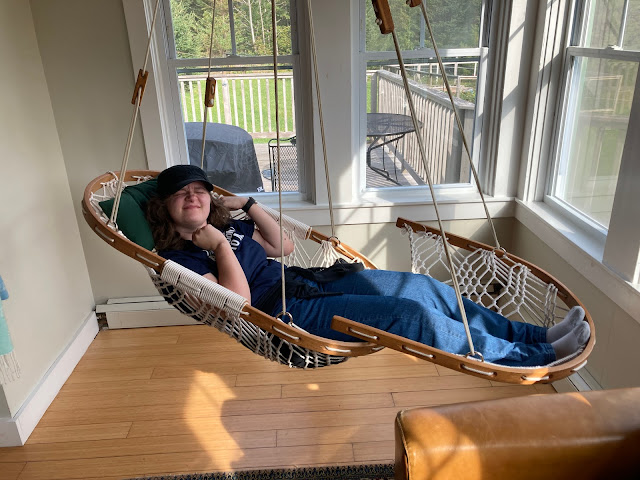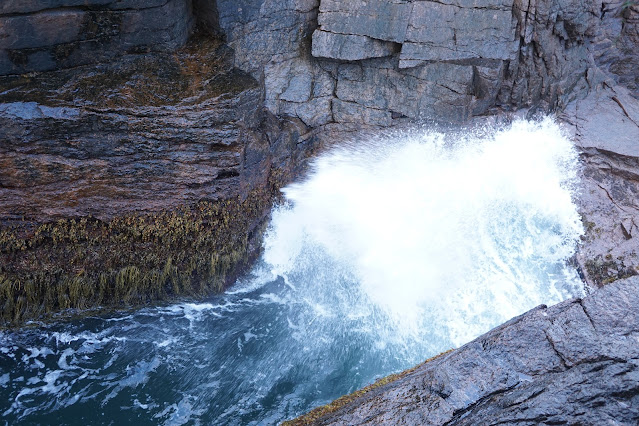*I gave a talk at church today and a few people have asked for a copy of it. I decided to post it here, minus the lame intro and nervous jokes.*
I spend a lot of time with the written word, both when I’m being paid to do it and on my own time. I’ve been a big reader for as long as I can remember, and anyone who has been to my house can attest to the fact that I have a bit of a book buying problem too . . . but that’s a problem I’m okay with having.
I read primarily for one of three reasons. First, is to escape. Whether my life is boring, difficult, or just complicated, it’s always a relief to escape into another world or to deal with someone else’s problems instead of mine. Second, reading is one of my favorite stress relievers and a very necessary part of my wind-down routine at night so I can be relaxed enough to sleep. And third is, of course, to learn. I love collecting little nuggets of wisdom and seeing the world—real or imagined—through others’ eyes.
I get especially excited when those bookish life lessons I find are also gospel truths. But the scriptures and words of latter-day prophets are the best source of plain and precious truths, so this year I’ve been trying to focus more on the lessons they have to teach me.
God is a god of miracles
One truth that has been on my mind a lot the last few years is that our Father in Heaven is a god of miracles.
In the April 2022 General Conference, President Nelson said:
Moroni assured us that “God has not ceased to be a God of miracles.” Every book of scripture demonstrates how willing the Lord is to intervene in the lives of those who believe in Him. He parted the Red Sea for Moses, helped Nephi retrieve the brass plates, and restored His Church through the Prophet Joseph Smith. Each of these miracles took time and may not have been exactly what those individuals originally requested from the Lord.
In the same way, the Lord will bless you with miracles if you believe in Him, “doubting nothing.” Do the spiritual work to seek miracles. Prayerfully ask God to help you exercise that kind of faith. I promise that you can experience for yourself that Jesus Christ “giveth power to the faint; and to them that have no might he increaseth strength.” Few things will accelerate your spiritual momentum more than realizing the Lord is helping you to move a mountain in your life.
It’s not hard for me to see miracles in other people’s lives, but I struggle to see them in my own. After Pres. Nelson gave this talk though, I decided to follow his counsel and seek and expect miracles from the Lord. I did this the only way I knew how—by praying for help. I prayed for the miracles I wanted, even though past experience had left me a little bitter on that point. I prayed for help seeing the miracles that were already there, too.
I’m not going to tell you that all my dreams suddenly started coming true. But I did start seeing tiny little miracles in my own life that I was blinded to before. I became a much happier, more grateful person. I grew in ways I wasn’t expecting, and in ways I wouldn’t have if I wasn’t focused on the Savior. And as I searched for, and found, these little miracles, my faith grew as well. One of the biggest blessings is the continual realization that I love the life I have, even though it wasn’t the one I planned for.
Not all miracles are obvious and life-changing, though. In fact, most of them aren’t. More often than not, it’s the quiet miracles that help us become who we are meant to become and get where we need to go. The better I understand this, the more I'm able to see that our Father in Heaven is eager to shower us with blessings and miracles. Pres. Nelson has also said that “God will do everything He can, short of violating your agency, to help you not miss out on the greatest blessings of all eternity.” A lot of times, all we need to do is simply pay better attention.
“Salvation is free”
When I was baptized at age 8, my grandma gave me my very first journal. I wrote about my baptism when I got home that day, and have kept a journal ever since. I am currently on journal number 34. (I did say I spend a lot of time with the written word.)
I’ve thought a lot about this gift over the years, and the gift giver as well. One of my grandma’s special talents was gift giving. For her, Christmas shopping wasn’t something she did only during the holidays. She spent all year shopping and making gifts for her grandkids. She was so on top of it that even though she passed away in February, many of my cousins got presents for Christmas that year that she had bought or worked on. She also gave gifts through service. Even though she had 9 kids of her own and not a lot of money, she opened her home to any kid in the neighborhood who needed a hot meal or love and safety, and was always quick to prepare a meal for a neighbor in need. And for the last 20 years of her life, she did this while battling cancer.
I say all this not to put my grandma on an impossible-to-reach pedestal, but to provide a little bit of context into why I still think about this gift, even decades later. My grandma had a lot of grandkids. A lot of people to take care of. A lot of her own problems. I don’t know where she found the energy to get to know her shy little granddaughter who sometimes spent more time in her garden eating all her cherry tomatoes than inside visiting with her. Somehow she saw past all of my louder, more entertaining relatives and the walls I put up around myself to understand that a journal would be the right gift to give me for my 8th birthday.
Because of that gift, journaling became a huge part of my life. It’s how I work through my problems because, as I suspect my grandma realized, I’m not the kind of person to talk to people about my problems. Writing is how I make sense of the world and my place in it. It helps me remember my life and what I’ve learned. It’s alarming the number of times I’ve reread old entries where my past self was having a grand realization about life, while my current self was thinking, “I thought I learned that for the first time a few weeks ago.” Human beings, by nature, are forgetful. It’s why the word “remember” is repeated so many times in The Book of Mormon—if we don’t make a conscious effort to remember what we’ve learned, we could lose it completely.
The journal I got on my baptism day is a gift that keeps giving, both because it was profoundly personal and continues to bless my life today.
All of us have access to an even greater gift, one that is exactly what we need, more than we deserve, and always there to bless us. That gift, of course, is the atonement. Lehi teaches us in 2 Nephi 2:4 that “salvation is free.” He didn’t mean “free” in the modern sense of the word. We don’t have to qualify for it. There are no preexisting conditions or circumstances that disqualify us from it. And we won’t be bombarded with ads for the rest of our life because of it.
This gift is free because it was given out of love. All we have to do is accept it.
In this month’s issue of the Liahona, President Jeffrey R. Holland teaches us:
Jesus Christ has made it clear that all Heavenly Father’s children have equal claim on the blessings of His gospel and Atonement. He reminds us that all “are privileged the one like unto the other, and none are forbidden” (2 Nephi 26:28).
“He inviteth them all to come unto him and partake of his goodness; and he denieth none that come unto him, black and white, bond and free, male and female” (2 Nephi 26:33).
“He inviteth them all”—that means all of us! We should not place superficial labels and artificial distinctions on ourselves or others. We should never put up any barriers to the Savior’s love or entertain thoughts that we or others are beyond His reach. As I have said before, “It is not possible for [anyone] to sink lower than the infinite light of Christ’s Atonement shines.”
Instead, as Sister Holland and I taught just a few months before her passing, we are commanded to “have charity, which charity is love” (2 Nephi 26:30). This is the love the Savior shows us, for “He doeth not anything save it be for the benefit of the world; for he loveth the world, even that he layeth down his own life that he may draw all men unto him” (2 Nephi 26:24).
This, the atonement, is the most precious truth of the gospel. It is profoundly personal and will bless us through the eternities. Our Father in Heaven knew we would need it, and he prepared the way for us to have it through his son who was willing to sacrifice everything so that all could be made right for each one of us, no matter how trivial or beyond saving we feel.
The most plain and precious truths of the gospel are centered on love. I know that God loves each of us individually and is an expert at personalizing our miracles. I may not know exactly how the atonement works, but I do know it does work and that it is a gift that has already been given to everyone who has lived or will live on this earth, and that it will never expire.






























